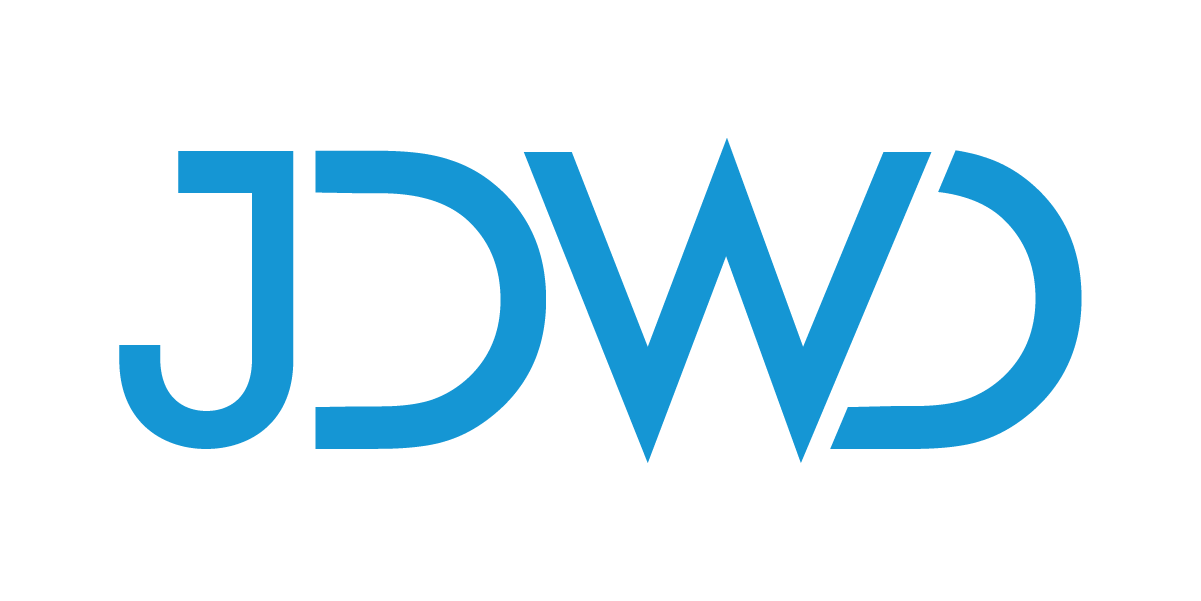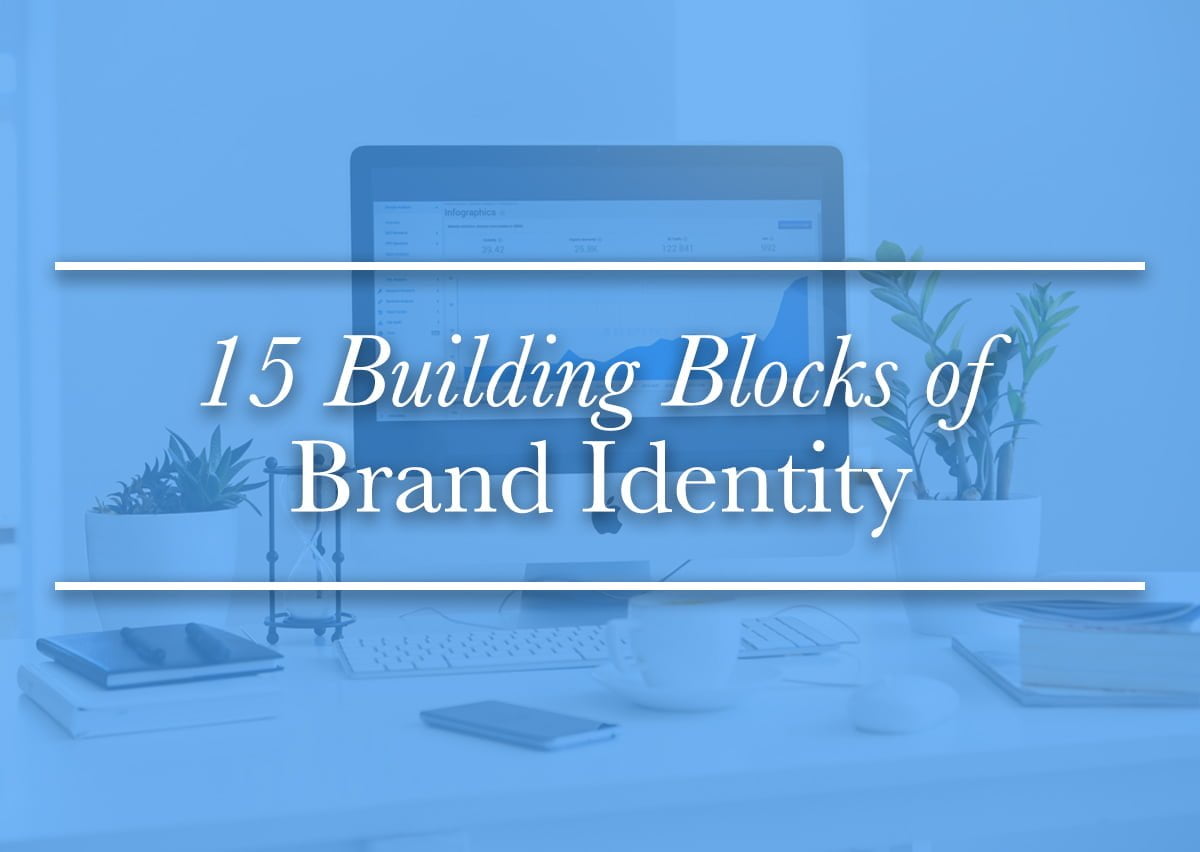15 Building Blocks of Branding Identity
Building a brand and expanding a company’s brand identity encompasses much more than a logo, colors, and fonts. Branding is an expansive topic that includes not only your visual presence, but the overall perception of your company in the minds of your consumers.
As a whole, branding communicates who you are and what you stand for as a company. If you’re looking to expand your company’s influence and presence, these 15 building blocks can help you identify your brand and start growing your brand presence.
- A memorable logo:
- When most people think of branding, they think of logo design. While a strong, memorable logo is one of the most recognizable aspects of branding, it’s just the start. Your logo should be memorable, recognizable, and communicate your style and target audience. Your company’s logo will be present on most of what you do, so ensure that it represents who you are and engages potential consumers or clients to learn more about who you are.
- Typography:
- Typography is an important aspect of branding because font choices and how you present the text describing your company conveys nonverbal signals about your target audiences. Typography encompasses everything from the signage within your stores to your print and digital advertisements. If you’re attempting to reach a younger audience, you’re more likely to use bold fonts to gain attention, while if you’re attempting to communicate your professionalism, you probably use classic fonts that appeal to older demographics.
- Color palettes and color psychology:
- Along with typography, the color choices you use make a large impact on your branding because color evokes emotion. Color psychology analyzes how people naturally respond to certain colors and the nonverbal signals that color choices communicate. Bright and bold colors convey very different messages than subdued or dark colors. When you’re establishing your branding, make sure to research color psychology or consult a designer to you ensure that you are communicating your desired message through your color palette.
- Website functionality:
- Website functionality plays a role in your branding because many people will interact with your company online before they do in person. What messages are you sending with the content on your website, and what is your call to action for people visiting your website? Are you attempting to make sales through your site, encouraging people to contact you, or rather simply providing value through the content you publish?
- Brand positioning:
- Brand positioning is an interesting aspect of branding because it is the perception of your company in the minds of your consumers and clients. Ultimately, you do not have the final say over your brand positioning, but all other aspects of what you do influence your brand positioning. When considering this section of branding, analyze what you want people to think of when they hear about your company. How are your marketing strategies and customer experiences affecting peoples’ perceptions of you? Adjust your strategies so they align themselves with what you would like your brand positioning to be.
- Identifying your target demographic:
- Narrowing your target demographic is an important part of your branding because it influences how you approach marketing and structure consumer experiences. One of the most dangerous ideas you can have at your company is that you are trying to reach everyone. If you approach your marketing this way, you will cast a generic message that will resonate with very few people and therefore will make less of an impact. Rather than trying to reach everyone, identify a specific demographic that benefits from your product and focus your marketing and branding towards that demographic.
- Conducting market research:
- After you define your target demographic, it’s extremely important that you conduct thorough market research. By researching where and how your target demographic consumes media and finds products, you allow yourself to spend your time and budgets on marketing that will have the highest ROI for your efforts. Make yourself available and present in the places where your target audiences are, and you will see a greater return on your branding and marketing efforts.
- Public relations:
- Many people don’t realize that public relations is an aspect of branding, but it is because it affects your brand positioning and the outside perception of your company. In today’s business world, people value companies that give back and dedicate themselves to causes. Younger demographics are particularly interested in buying products or services from companies that are transparent and philanthropic. Ensuring that you are managing your company’s public relations can have a large impact on your overall branding.
- Photography:
- They say that a photo is worth 1,000 words, therefore the style of photography that you use in your marketing and advertising contributes to how consumers perceive your business. Do you feature mostly product photography? Or stock images of your ideal client? Is the color palette of your photography bright and lively, or more subdued? Photography evokes strong emotions, so focus on using photography that aligns with the style and voice you use within your branding.
- Social media presence:
- Social media marketing and management is an entire industry within the marketing world, but how your company approaches social media plays a large role in your branding and brand positioning. Social media is a frequent and direct source of communication with your consumers, and therefore has a large impact on how your followers perceive who you are as a company. Social media is your opportunity to put forward the exact messaging you want your consumers to see.
- Platform consistency:
- Consistency across platforms is a more elusive aspect of branding because it requires you to focus on your messaging across all of your marketing efforts. Platform consistency means that you are using the same voice throughout everything you do, but does not mean that you just post the same content on every single platform with no variation. While it’s crucial to have the same tone, it’s also important to diversify your content across your marketing channels to inspire consumers to follow you on multiple platforms, such as different social media channels, your website or blog, email marketing, etc.
- Videography:
- Video is a powerful marketing tool that allows you to tell your company’s story unlike any other digital media. High quality videos that are concise and impactful can be used in several ways and strongly contribute to improving your brand and brand positioning. Social media platforms also highly favor video content, so the videos you post help to boost your reach and following on social media as well.
- Mission statement and company values:
- Your company’s values and mission statement are a part of your branding because it connects all of your efforts to the core of who you are as a company. Your mission and values should be your guiding point for all of your efforts and actions as a company. If you establish and remain true to your mission and values, these ideas ultimately guide everything concerning your brand.
- Copywriting voice:
- Similarly to platform consistency, using the same copywriting voice across your marketing is crucial because it connects to the voice in people’s heads. This copywriting voice exists across all platforms, such as blogging, email marketing, print ads, social media, your website and more. Whether you use a casual tone and slang versus a more formal approach to your writing, make sure that the voice you use reflects your company and is consistent.
- Consumer engagement:
- One of the most important aspects of your branding and place in the mind of your consumers is how they engage with you and your response. If people contact you on social media or through a website form, make sure that you engage quickly and respond to their needs. Ensure that you make it easy for consumers to connect to you and that you respond with a personal and helpful touch. This will make sure that they have a positive experience with you and make them more likely to remember you and your company.
Here at JDWD, we are a team of experts who can work with you to analyze your goals and develop strategies that will push your brand into the future. Interested in learning more about branding or how it can benefit your company? Contact us today, and we can discuss how a strong brand identity and JDWD can help you grow your company.


0 Comments